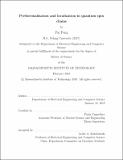| dc.contributor.advisor | Paola Cappellaro. | en_US |
| dc.contributor.author | Peng, Pai(Scientist in electrical engineering and computer science)Massachusetts Institute of Technology. | en_US |
| dc.contributor.other | Massachusetts Institute of Technology. Department of Electrical Engineering and Computer Science. | en_US |
| dc.date.accessioned | 2019-07-15T20:31:38Z | |
| dc.date.available | 2019-07-15T20:31:38Z | |
| dc.date.copyright | 2019 | en_US |
| dc.date.issued | 2019 | en_US |
| dc.identifier.uri | https://hdl.handle.net/1721.1/121659 | |
| dc.description | This electronic version was submitted by the student author. The certified thesis is available in the Institute Archives and Special Collections. | en_US |
| dc.description | Thesis: S.M., Massachusetts Institute of Technology, Department of Electrical Engineering and Computer Science, 2019 | en_US |
| dc.description | Cataloged from student-submitted PDF version of thesis. | en_US |
| dc.description | Includes bibliographical references (pages 87-98). | en_US |
| dc.description.abstract | How can a quantum many-body system escape the fate of thermalization is of importance to both fundamental study of quantum statistical physics and applications in quantum devices. Here we develop novel experimental and computational tools to address this question. First, novel control techniques are introduced to investigate prethermalization, a process where a quantum system fails to thermalize on a practical timescale. Prethermalization is demonstrated by measuring out-of-time ordered (OTO) correlations in nuclear spin systems with magnetic resonance techniques. Hamiltonian engineering enables tuning the strength of spin-spin interactions and of a transverse magnetic field in a spin chain system, as well as to invert the Hamiltonian sign to reveal OTO correlations. The experiments reveal that at high fields an emergent conserved quantity arises due to prethermalization, and the OTO commutator involving such prethermal conserved quantity saturates after a short time. | en_US |
| dc.description.abstract | These results not only introduce a new protocol to measure out-of-time ordered correlations, but also provide new insights in the study of prethermalization. Second, the role of localization in avoiding thermalization is analyzed with a novel computational method. Introducing a novel, non-perturbative approach, a complete set of local integrals of motion (LIOMs) in many-body localization systems can be computed efficiently. By maximizing the overlap between LIOMs and physical spin operators in real space, the set of LIOMs satisfies the desired exponential decay of weight of LIOMs in real space. This allows comparing localization lengths extracted from the LIOM weights, their interactions, and dephasing dynamics, which reveals interesting aspects of many-body localization. This scheme is immune to accidental resonances and can be applied even at the phase transition point, providing a novel tool to study the microscopic features of the phenomenological model of many-body localization. | en_US |
| dc.description.abstract | The results presented here provide insight into two many-body mechanisms for avoiding thermalization and pave the way for further exploration to unravel the dynamics of complex quantum spin systems. | en_US |
| dc.description.statementofresponsibility | by Pai Peng. | en_US |
| dc.format.extent | 98 pages | en_US |
| dc.language.iso | eng | en_US |
| dc.publisher | Massachusetts Institute of Technology | en_US |
| dc.rights | MIT theses are protected by copyright. They may be viewed, downloaded, or printed from this source but further reproduction or distribution in any format is prohibited without written permission. | en_US |
| dc.rights.uri | http://dspace.mit.edu/handle/1721.1/7582 | en_US |
| dc.subject | Electrical Engineering and Computer Science. | en_US |
| dc.title | Prethermalization and localization in quantum spin chains | en_US |
| dc.type | Thesis | en_US |
| dc.description.degree | S.M. | en_US |
| dc.contributor.department | Massachusetts Institute of Technology. Department of Electrical Engineering and Computer Science | en_US |
| dc.identifier.oclc | 1102051156 | en_US |
| dc.description.collection | S.M. Massachusetts Institute of Technology, Department of Electrical Engineering and Computer Science | en_US |
| dspace.imported | 2019-07-15T20:31:35Z | en_US |
| mit.thesis.degree | Master | en_US |
| mit.thesis.department | EECS | en_US |
